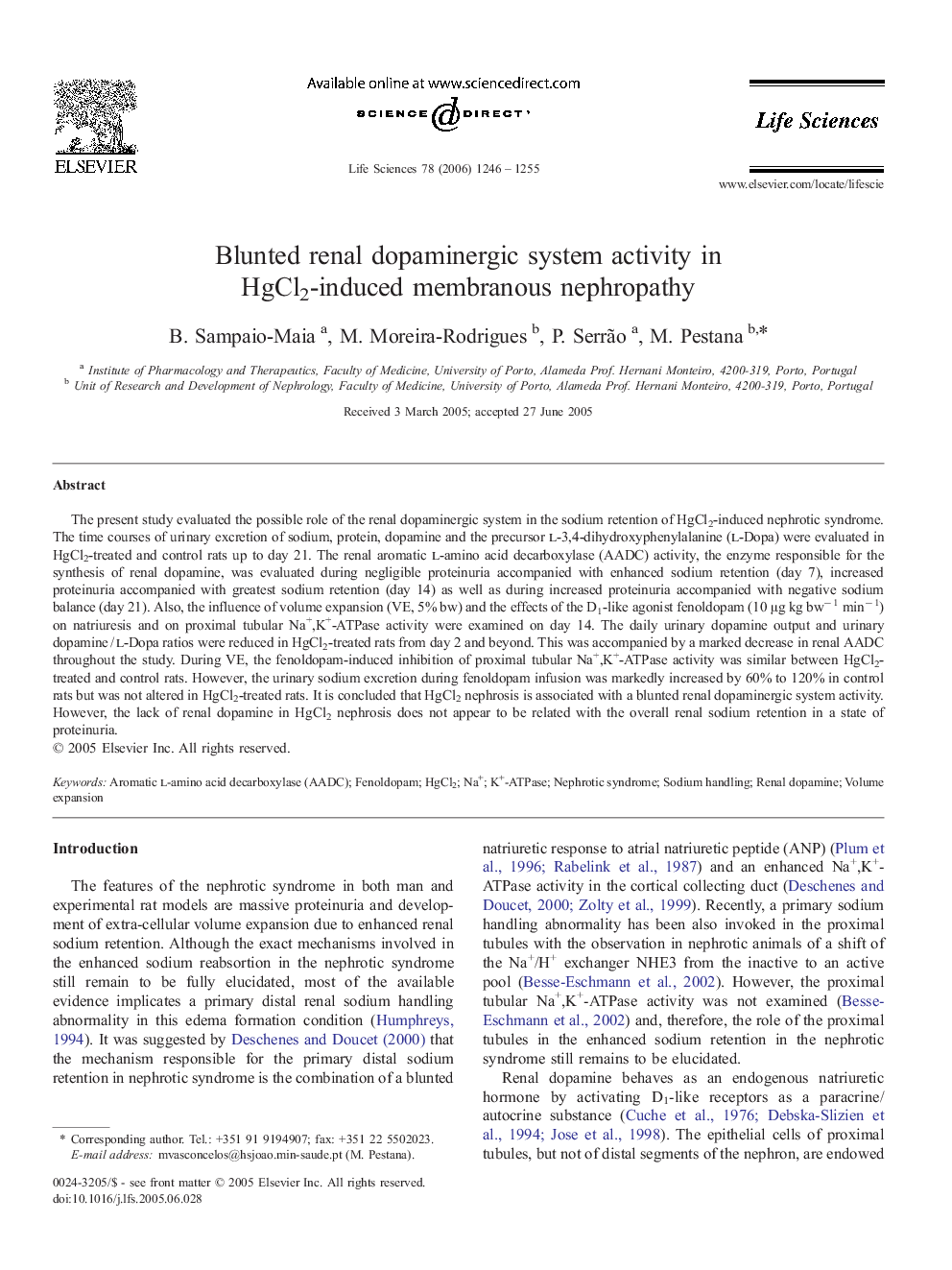| Article ID | Journal | Published Year | Pages | File Type |
|---|---|---|---|---|
| 2554485 | Life Sciences | 2006 | 10 Pages |
The present study evaluated the possible role of the renal dopaminergic system in the sodium retention of HgCl2-induced nephrotic syndrome. The time courses of urinary excretion of sodium, protein, dopamine and the precursor l-3,4-dihydroxyphenylalanine (l-Dopa) were evaluated in HgCl2-treated and control rats up to day 21. The renal aromatic l-amino acid decarboxylase (AADC) activity, the enzyme responsible for the synthesis of renal dopamine, was evaluated during negligible proteinuria accompanied with enhanced sodium retention (day 7), increased proteinuria accompanied with greatest sodium retention (day 14) as well as during increased proteinuria accompanied with negative sodium balance (day 21). Also, the influence of volume expansion (VE, 5% bw) and the effects of the D1-like agonist fenoldopam (10 μg kg bw− 1 min− 1) on natriuresis and on proximal tubular Na+,K+-ATPase activity were examined on day 14. The daily urinary dopamine output and urinary dopamine / l-Dopa ratios were reduced in HgCl2-treated rats from day 2 and beyond. This was accompanied by a marked decrease in renal AADC throughout the study. During VE, the fenoldopam-induced inhibition of proximal tubular Na+,K+-ATPase activity was similar between HgCl2-treated and control rats. However, the urinary sodium excretion during fenoldopam infusion was markedly increased by 60% to 120% in control rats but was not altered in HgCl2-treated rats. It is concluded that HgCl2 nephrosis is associated with a blunted renal dopaminergic system activity. However, the lack of renal dopamine in HgCl2 nephrosis does not appear to be related with the overall renal sodium retention in a state of proteinuria.
